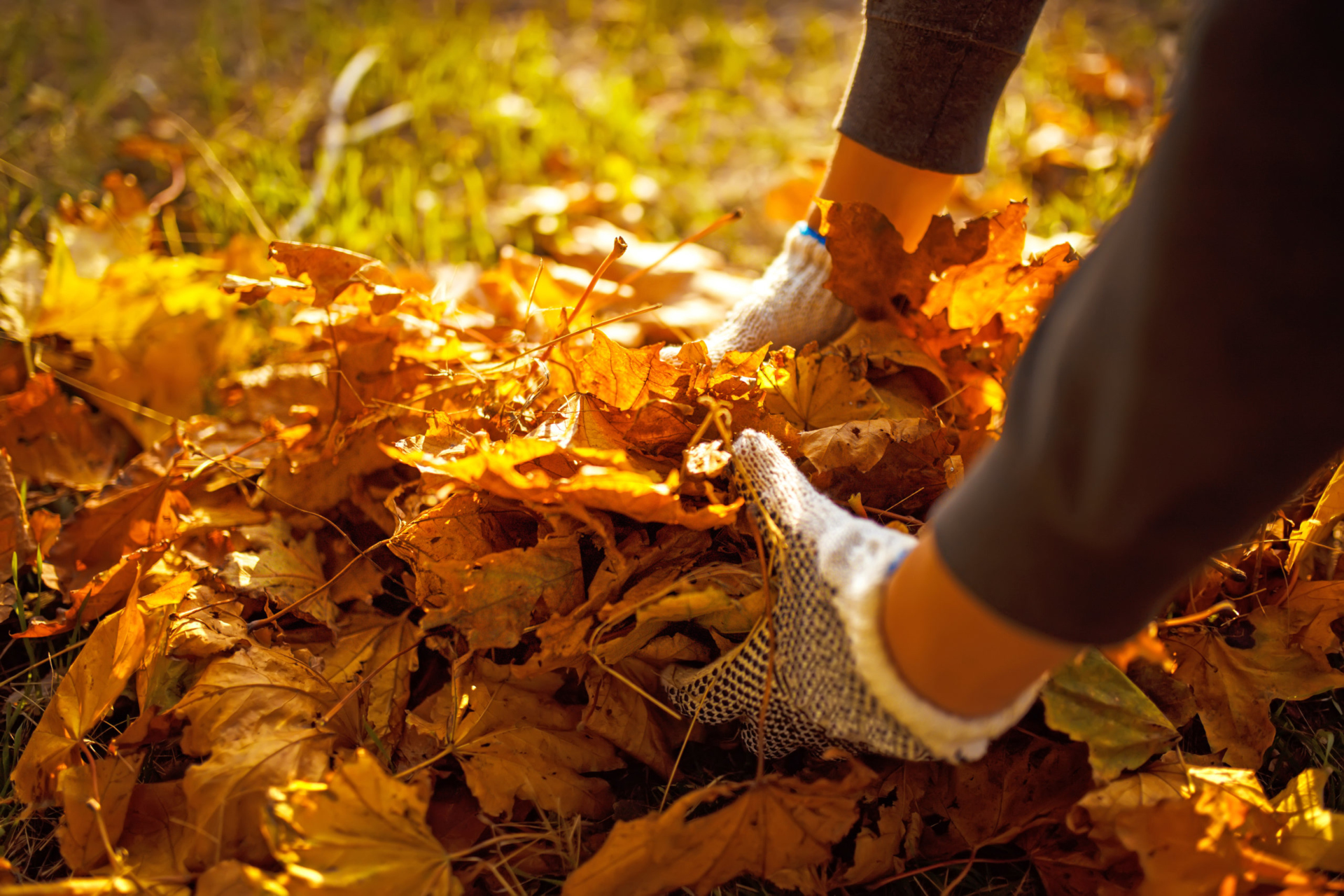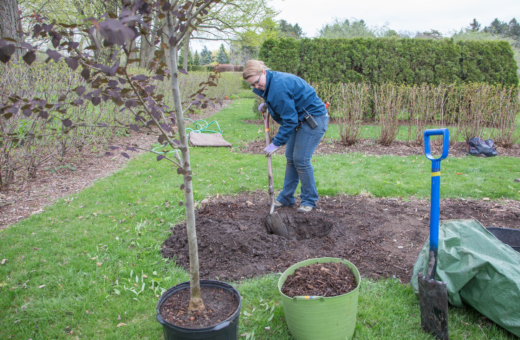October 17, 2023
As leaves fall and winter approaches, it’s time to clean up the garden. But don’t get carried away, says Sharon Yiesla, plant knowledge specialist at the Plant Clinic at The Morton Arboretum.
“You don’t have to whisk away every leaf and cut back every stem down to the bare soil,” she says. Remember that in nature every plant, including trees, lives under a layer of decaying leaves and stalks from previous years. Over time, that leaf litter is consumed by microorganisms to enrich the soil for plants’ roots. “If you clear away that banquet entirely, your garden can be more like a desert,” Yiesla says. Instead, make use of the leaves and organic matter that are abundant in fall to improve your soil and keep your plants healthier.
Here are some tips to help you choose what you need to clean up, what you can leave alone, and what you can use to prepare your garden for winter.
Clean up diseased or infested plants. If any of your plants had a serious problem, such as apple scab on crabapple trees, collect the leaves and dispose of them outside your yard, through leaf or landscape waste pickup. Don’t put them in your compost pile. Fungus spores and insect eggs can overwinter on affected leaves and branches, so cleanup can reduce the risk that the issue will return next year.
Cover the soil. Bare soil is not only unnatural, but the lack of leaf litter exposes plants’ roots to swings in temperature during the winter. Roots can be killed by cold, and short winter warm spells can endanger plants by tricking them into coming out of dormancy too soon. Make sure all soil in perennial beds is covered with a 1- to 2-inch layer of mulch.
Use leaves as mulch. Fallen leaves are an abundant source of free mulch. Just rake them onto perennial beds or around trees and shrubs. Do remove most leaves from the lawn, where a dense covering can block the sunlight or trap moisture, which may encourage turf diseases. But a leaf here and there won’t hurt.
Shred leaves with the lawn mower. Leaves in small pieces look more tidy as mulch and don’t blow around as much. Rake them into a pile on the lawn and run a power mower over them several times to cut them up. Shredded leaves are useful as mulch, especially in perennial beds; as an ingredient for compost; or to enrich the lawn. Just rake the shreds out over the grass, where they will soon decay and improve the soil.
Spread mulch the right way. When you spread mulch made from shredded or chipped wood, never pile it against the bark of a tree. It can trap moisture, encourage disease, and provide a haven for nibbling rodents. Instead, spread it in an even layer about 3 to 4 inches deep. Pull the mulch a few inches away from the bark. Make the area of mulch around the tree as wide as you can, but at least 4 feet in diameter. In perennial and ground cover beds, mulch should only be 1 to 2 inches deep.
Start a compost pile: Compost is a nourishing feast for soil organisms and you can create it at home. Start with a pile of autumn leaves in an out-of-the-way place, mixed with some green material such as end-of-season annuals and a little garden soil. In a few months, it will break down and become rich, brown compost, which can be added to beds to improve the soil. If you already have compost in a pile or bin, scatter it over the soil of garden beds. Then stoke up the pile with newly fallen leaves and other autumn bounty. Keep a stash of leaves to feed into the compost pile throughout the year.
Trim plants by paths: Cut back ground covers and other perennials that have spread over the edge of a sidewalk or path to make snow shoveling easier.
Plant bulbs: October is the time to plant spring-blooming bulbs such as daffodils, tulips, and crocuses. Choose a site in full sun. Plant each bulb in a hole at least twice as deep as the bulb is wide. Don’t add fertilizer, but water the bulbs and spread mulch over them.
Leave what looks good to you: There is no need to cut back perennials or remove the dried flower heads of hydrangeas and other shrubs unless the plants were diseased. In fact, if you let perennials stand, the crown of stalks will help protect the roots in the winter. It’s also a matter of taste: Some gardeners like the look of dried plant stalks and seed heads, while some prefer a more manicured garden. You can always cut stalks back later in the winter if they start to look tattered. Avoid cutting back native plants. Valuable native insects, including those we depend on as pollinators, often overwinter or lay eggs in plant stalks. Let ornamental grasses stand. In winter, the windblown movement of their golden stems adds visual interest to the garden. Plan to cut grasses back in late February or early March, before new growth begins.
Wait to prune: Trees and shrubs are best pruned in winter, when they are fully dormant. Wait to prune until leaves have dropped. Pruning too soon could stimulate new growth that would be killed by winter cold.
Have questions about caring for your plants and trees as you prepare for winter? You can contact the Plant Clinic to get advice from Arboretum experts.



